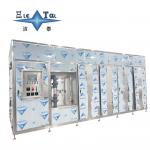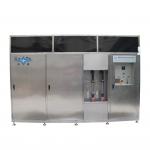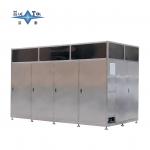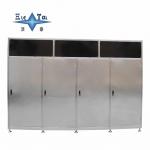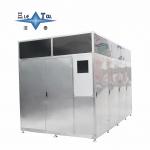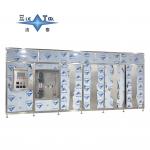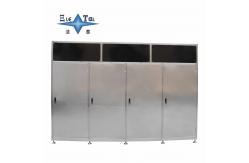Zero-Discharge Treatment System For Ultrasonic Cleaning Wastewater
| Achieving 98% Water Recycling With Three-Stage Filtration And RO
Reverse Osmosis Technology The Upflow Anaerobic Sludge Blanket (UASB) reactor stands as a
cornerstone in anaerobic wastewater treatment, particularly
effective for high-strength organic wastewater containing
biodegradable contaminants. This technology operates without
oxygen, relying on a dense bed of granular anaerobic sludge to
decompose organic matter into biogas (methane and carbon dioxide)
through a series of microbial reactions: hydrolysis, acidogenesis,
acetogenesis, and methanogenesis. The UASB reactor features a cylindrical tank with three functional
zones: the bottom inlet zone where wastewater enters upward, the
central reaction zone populated by granular sludge flocs, and the
top settling zone equipped with a gas-liquid-solid separator. As
wastewater ascends through the sludge blanket, organic compounds
are broken down by anaerobic bacteria, producing biogas that
agitates the sludge and enhances contact efficiency. The separator
at the top captures biogas for energy recovery, allows clarified
water to discharge, and returns settled sludge to the reaction
zone, maintaining a high biomass concentration (up to 50-80 g/L). Advantages & Applications: - Energy Efficiency: Unlike aerobic systems, UASB requires no aeration, reducing
energy consumption by 80-90%. Additionally, biogas production can
offset 30-50% of a plant’s energy needs, making it cost-effective
for industries like food and beverage, pulp and paper, and
slaughterhouses, where wastewater has high biochemical oxygen
demand (BOD > 1,000 mg/L).
- Compact Design: The high sludge retention capacity allows for a volumetric
loading rate 2-5 times higher than conventional anaerobic tanks,
minimizing land use.
- Low Sludge Production: Anaerobic processes generate 70-80% less excess sludge than
aerobic systems, reducing disposal costs.
Challenges: - Sensitivity to Shock Loads: Sudden changes in temperature (optimal range: 30-35°C for
mesophilic, 50-55°C for thermophilic), pH (6.5-8.5), or toxic
substances (e.g., sulfides, heavy metals) can disrupt microbial
activity.
- Long Start-Up Period: Cultivating granular sludge takes 3-6 months, requiring careful
seeding and gradual loading.
- Limited Nitrogen/Phosphorus Removal: UASB primarily targets organic matter; post-treatment (e.g.,
aerobic processes or chemical precipitation) is often needed for
nutrient removal.
|
